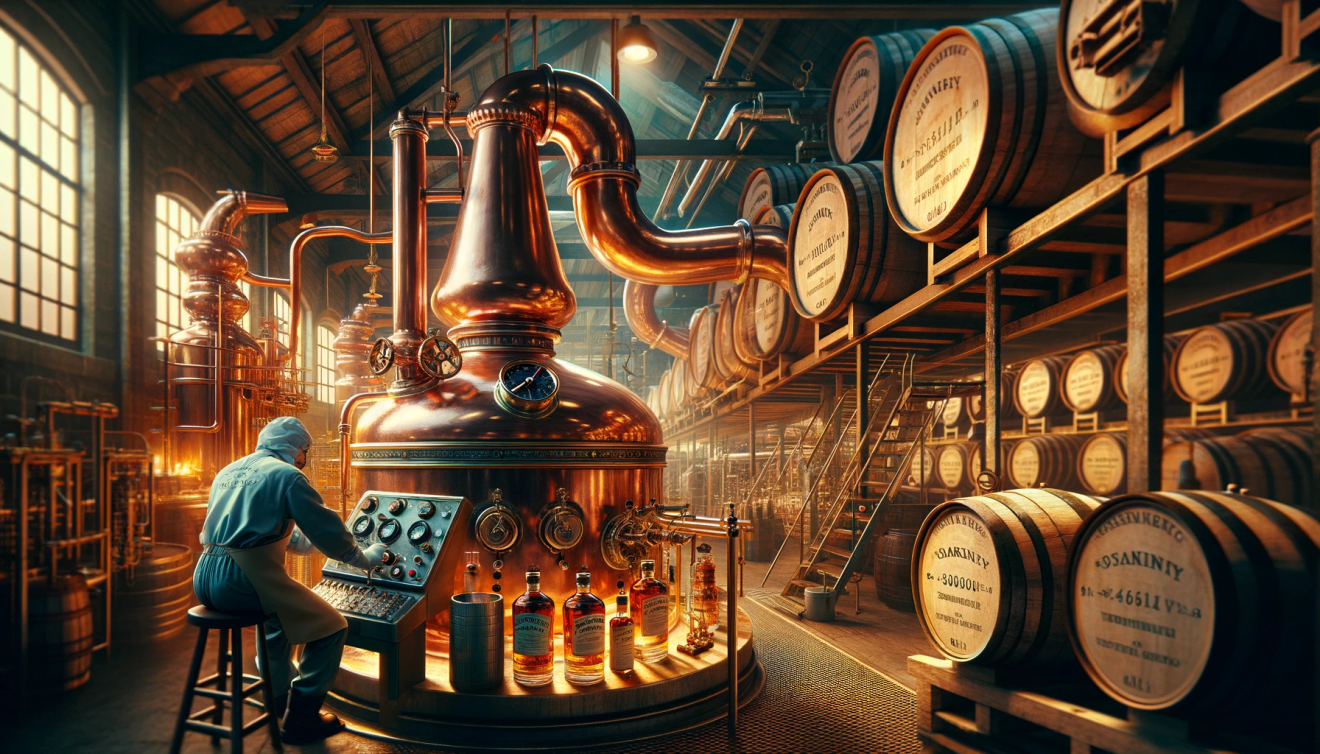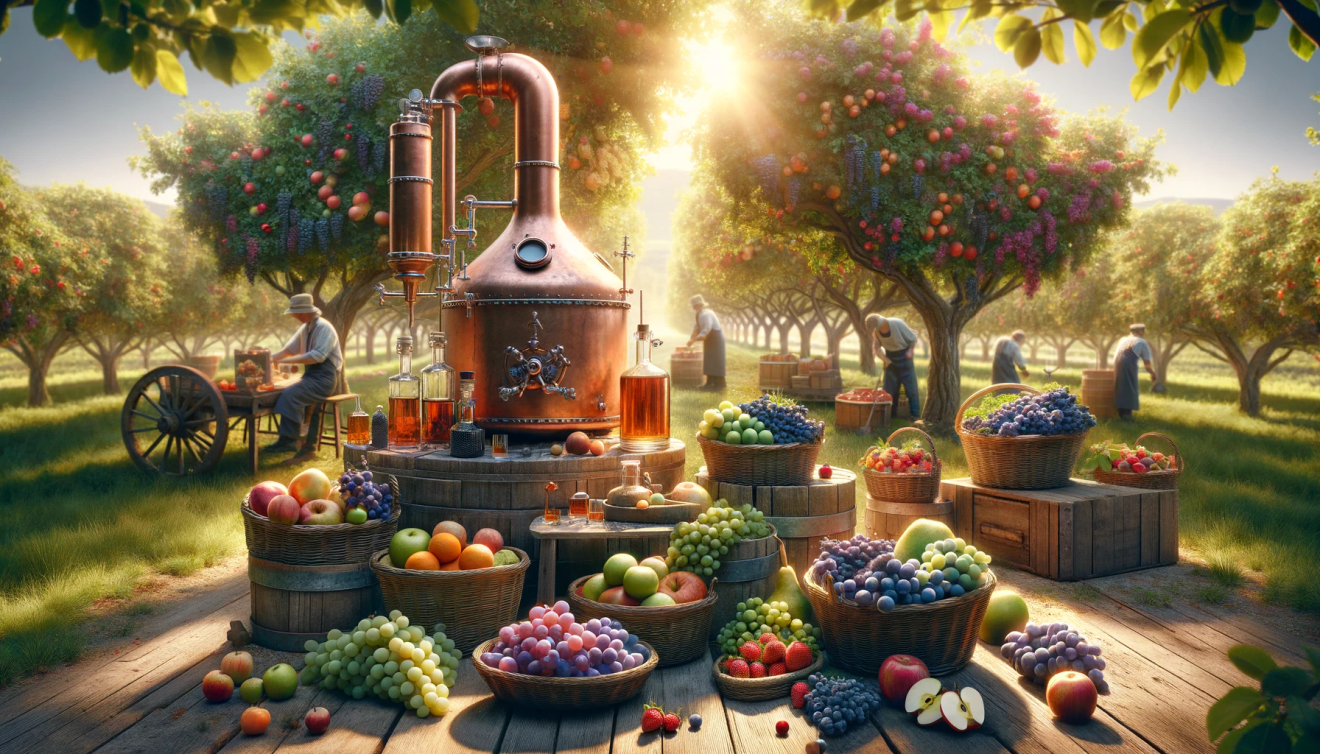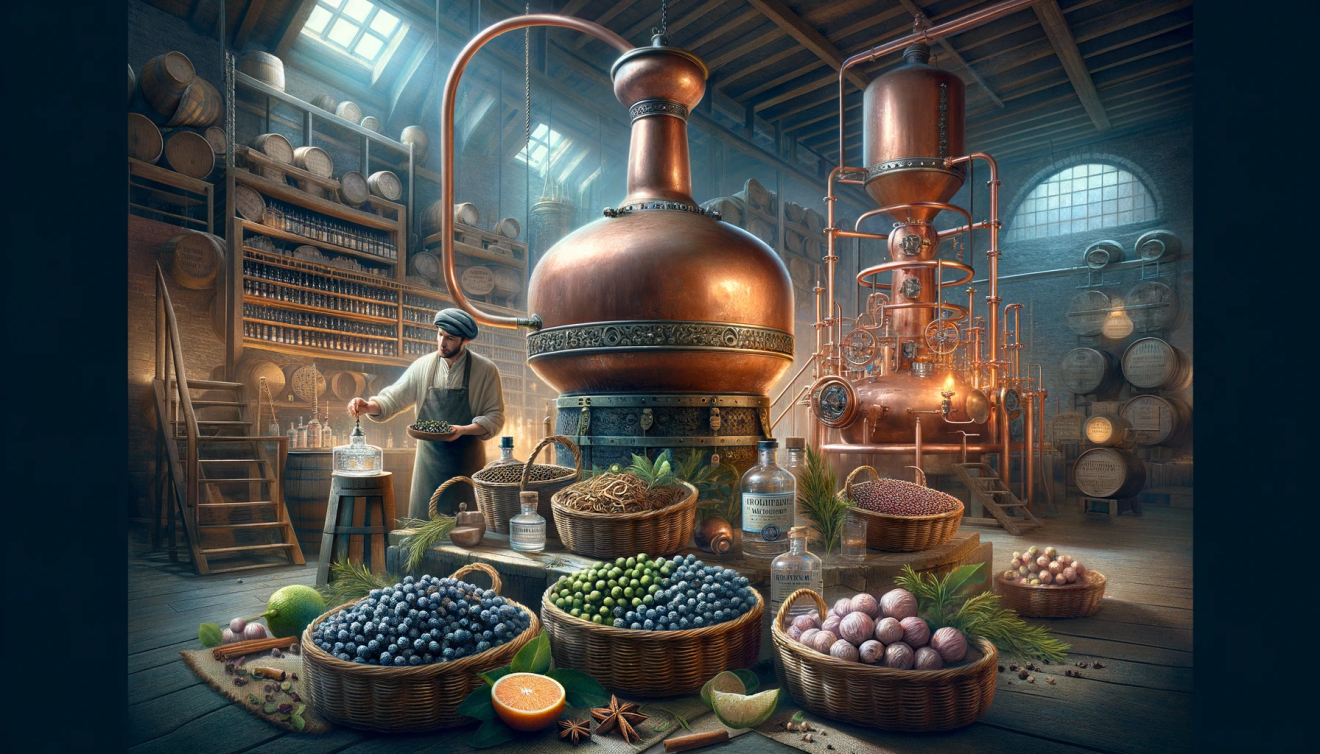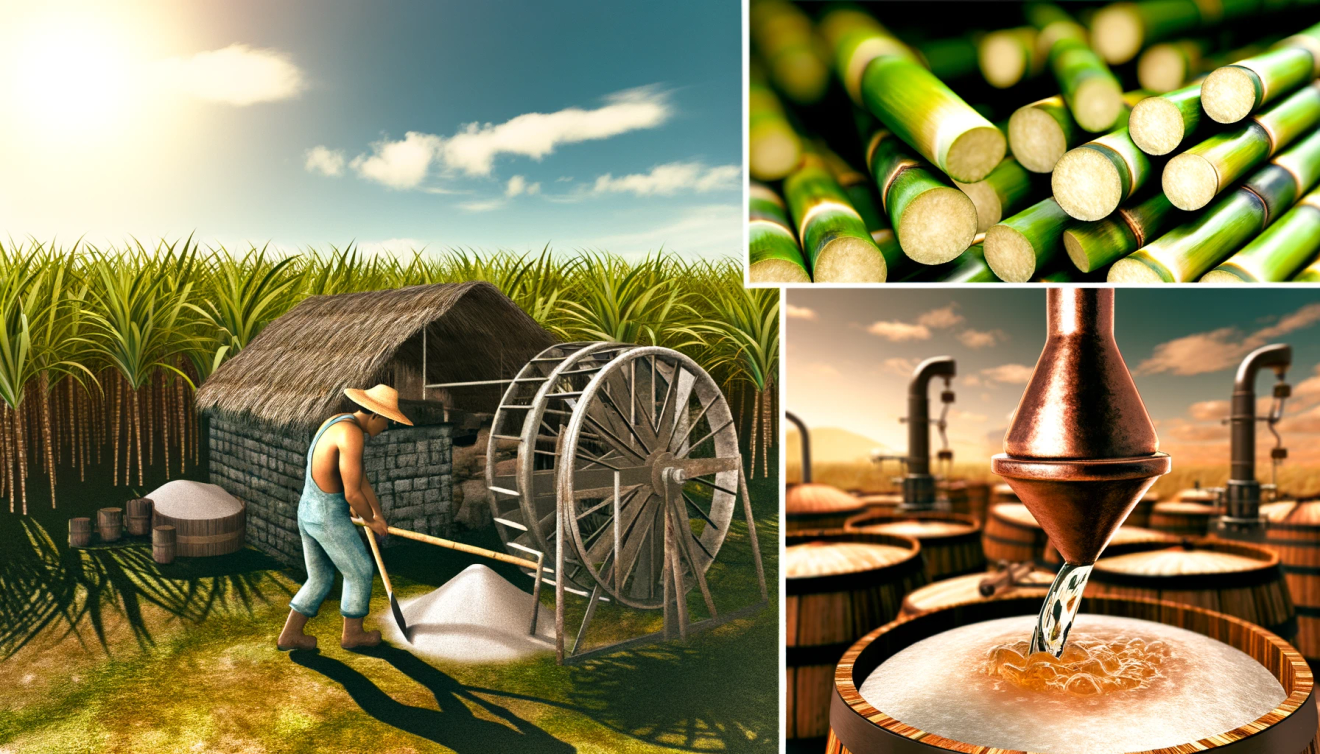Subject
- #Whiskey Production Process
- #Types and Raw Materials of Liquor
- #Whiskey
- #Brandy
- #Liquor Production Process
Created: 2024-03-18
Created: 2024-03-18 22:10

Whiskey Production Process
1. Malt Production: Malt (mostly barley) is made by soaking barley in water, allowing it to sprout, and then drying it.
2. Mashing and Fermentation: The malt is crushed and mixed with hot water to convert the starches into sugars (mashing). This sweet liquid (wort) is then cooled and yeast is added, initiating fermentation and the transformation into alcohol.
3. Distillation: The resulting low-alcohol liquid (around 10-15%) is distilled, producing a high-proof distillate (over 60%), known as spirit or white spirit.
4. Aging: The distilled spirit is then placed in oak barrels for maturation.
※ While primarily made from barley, other grains like wheat, corn, and rye can also be used, resulting in a type of whiskey called grain whiskey.
※ When corn is the primary grain, it's referred to as bourbon whiskey.

Brandy Production Process
Brandy is made by distilling fruit wine. While grapes are the most common ingredient, various fruits such as apples, pears, cherries, and strawberries can be used. The fermented fruit wine (like wine) is double-distilled before being aged in oak barrels, unlike wine which is aged immediately after fermentation.
When brandy is produced in the Cognac region of the Charente department in France, it is called Cognac. However, it's important to note that it's made from white grapes, not the red grapes typically associated with brandy.
Port wine grapes are harvested in late summer to early autumn. After crushing, the juice is fermented in tanks. The fermentation is halted early to retain some sweetness in the wine. This halt is achieved by adding a high-alcohol grape spirit (brandy). Finally, it is aged in large oak barrels or bottles before release.

Gin Production Process
Juniper berries are typically used in the production of gin. Usually, a pure alcohol base is created through the fermentation of grains. Then, botanicals are added to impart a distinctive flavor. This means that the botanicals and the alcohol base are combined in a still and then distilled. This process allows the aroma compounds to be absorbed by the alcohol vapor, giving gin its unique character.
Vodka is primarily made from grains (corn, rye, wheat, etc.) or potatoes. The grains are ground and mixed with water, and sometimes enzymes, to convert complex carbohydrates into simple sugars. Yeast is then added to initiate alcoholic fermentation. The fermented liquid is then distilled to increase the alcohol content and remove impurities. It is distilled multiple times to achieve a very high alcohol concentration (often up to 95%). Eventually, it is diluted back to the desired alcohol content for consumption (typically 40%).

Rum Production Process
Rum is produced using ingredients derived from sugarcane. Sugarcane juice or molasses is typically used as the base ingredient.
※ Molasses is a byproduct of the sugar refining process, obtained after sugar has been extracted from sugarcane.
Comments0